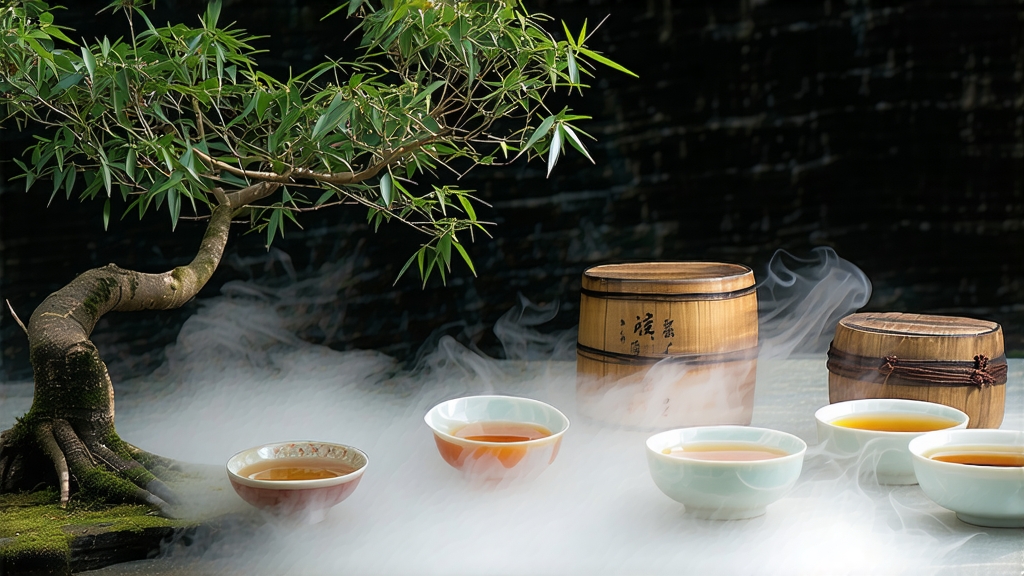
If green tea is China’s springtime and pu-erh its autumn, then oolong is the country’s long, golden afternoon—balanced between freshness and depth, floral lift and mineral bass. Among the hundreds of oolongs that arc across the southern provinces, none carries more myth, more political intrigue, or more concentrated “rock rhyme” (yanyun) than Da Hong Pao from the Wuyi Mountains of northern Fujian. Literally “Big Red Robe,” the name alone evokes imperial scarlet, yet the tea itself is a study in restraint: a slow-unfolding perfume of roasted apricot, orchid, and wet stone that lingers like a memory you cannot name. For international drinkers who have met only the supermarket version spun from low-elevation clones, the authentic cliff-origin Da Hong Pao is a revelation—part sensory thunderclap, part liquid archaeology.
History: from outlawed tribute to national gift
Song dynasty records mention “tribute stones” shipped from Wuyi, but the first explicit citation of Da Hong Pao appears in a Ming-era stele dated 1385, erected after a monk presented the tea to the Hongwu Emperor and cured an imperial concubine’s illness. Legend claims the emperor draped his own vermillion robe over the six mother bushes clinging to Jiulongke (“Nine-Dragon Hollow”) as thanks, turning the shrubs crimson overnight. Whether folklore or marketing foresight, the story cemented the tea’s aura. By the late Qing the original bushes were so coveted that armed guards stood watch; during the Cultural Revolution they were secretly grafted and relocated to protect them from Red Guard iconoclasm. In 1972 Mao Zedong gave 200 g of mother-tree Da Hong Pao to U.S. President Nixon, normalizing the metric—equal to “four liang of gold,” Chinese media quipped—thereby welding the tea to diplomatic lore. Today the mother bushes, aged over 350 years, are officially retired from plucking; the last harvest in 2006 fetched US$30,000 for 20 g, making the tea more expensive per gram than gold.
Terroir: why cliffs taste different
Wuyi’s Danxia landform—purple-red sandstone and tuff compressed 80 million years ago—creates nearly vertical cliffs that reflect heat onto narrow ledges where tea roots burrow into mineral fissures. Morning mist rising from the Nine-Bend River acts as a natural shade cloth, slowing photosynthesis and concentrating amino acids. The result is a pronounced “rock rhyme,” a tactile finish that Chinese tasters describe as “the sensation of licking a wet stone then breathing cold air.” Soil assays show 4–5 % iron oxide and measurable rare-earth elements; while the scientific link to flavor remains debated, blind cuppings consistently distinguish true cliff tea from garden-grown counterparts grown just 500 m away.
Cultivars: the royal family tree
- Qi Dan: a direct clone of the mother bushes, prized for its lilac nose and flinty finish.
- Bei Dou No.1: bred in the 1960s from cuttings taken secretly before the mother trees were sequestered; hardier yet still mineral.
- Que She (“Sparrow Tongue”): a smaller-leaf mutation with higher jasmine lactones, giving a honeysuckle top note.
- Rou Gui (“Cinnamon”): not genetically Da Hong Pao but often blended in commercial grades to add spicy sweetness; true Wuyi aficionados insist on unblended Qi Dan for pedigree.
- Lao Cong (“Old Bush”): harvested from 60–80-year-old shrubs on the outer cliffs; deeper, resinous profile reminiscent of aged Riesling.
Craft: the nine-step charcoal tango
Unlike southern oolongs that are lightly baked, Da Hong Pao undergoes a months-long charcoal roasting that would break lesser leaves. The sequence begins at 2 a.m. when night humidity is lowest:
- Pluck: one bud plus three or four leaves, when the leaf’s edge turns pale yellow—“the golden moment” lasting only 48 h in late April.
- Solar withering: leaves are laid on bamboo screens angled toward the rising sun for 20 min, then moved to shade; the oscillation jump-starts enzymatic oxidation.
- Indoor withering: shaken every hour for 6–8 h to bruise leaf edges while keeping the vein intact; the rust-red rim signals